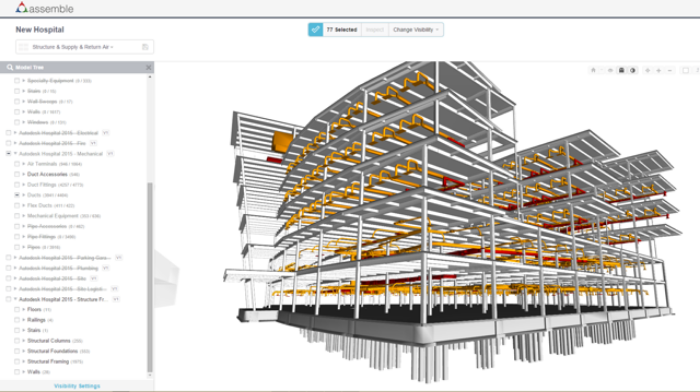by TIM KELLY, product manager, Assemble Systems | March 19, 2016
Before starting any major construction project, it’s important to put together a BIM Execution Plan (BEP) to review and implement during various phases of the project. A BIM execution plan is a comprehensive document that helps the project team identify and execute the role BIM plays in the various phases of construction management.
Often times during construction projects, plan execution becomes halted and buried in unnecessary micro-details that makes it difficult to find and identify key data to keep projects moving forward and produce on time deliverables. Properly built BEPs help keep teams on track by focusing on the important details, not necessarily micro-details, saving hours of time.
Below are five huge benefits of creating and leveraging BIM execution plans in your next construction project:
1) Communications. BIM execution plans encourage instant communication among teams at the very start of the project, helping to manage responsibilities and expectations, and ensure clear communications are available for all stakeholders involved;
2) Collaboration. Each construction project differs heavily from the last and may have different requirements depending on the needs of the project, regulations and internal standards. Because a BIM execution plan is a living, breathing document, the project team should collaborate in real time on various phases of the project, preventing unnecessary silos among project tasks and allowing for proper attention to be given to the particular project regardless of the requirements or standards in place;

3) Saving time. One of the biggest hurdles in any construction project is a compressed schedule. With a well-built BEP focused on the project benefits, nobody is going to be bogged down with scrutinized details which very often cause damaging delays to project deliverables. Instead, only the most important details are worked on and available in this plan, helping maintain your schedule of deliverables throughout the project;
4) Sharing data. Transparency is a huge value that BIM execution plans add, as they’re readily available for all teams and stakeholders from the very start of the process. Now, contractors to project owners and everyone in between should have direct access to BIM implementation data (such as file formats, details and dimensions of the model) in a way that’s easily shareable and can be updated frequently;
5) Stronger execution. Composing a BEP focused on the project at hand rather than including every standard ever created, a team can communicate and collaborate better from the very start of the project, it ensures a strong finish and execution, pleasing project owners and investors. Executing on this plan helps keep items moving and accountable to ensure a strong finish on time and on budget.
Penn State University offers a fantastic guide to getting started with BIM execution plans, which can be downloaded free on the web. By leveraging a BEP, teams can begin any major project on the right footing. This will ensure that proper communication among stakeholders and the sharing of data is available from Day 1, meaning stronger executions, better timelines, and happier project owners.
Based in Houston TX, the author is a product manager at Assemble, responsible for working with customers to develop product strategy. Having spent the last seven years innovating with BIM for both general contracting and construction management, Kelly previously served as BIM Manager at Satterfield & Pontikes Construction Inc., which built the giant BIM cave at Texas A&M University.





Discussion
Be the first to leave a comment.
You must be a member of the BuiltWorlds community to join the discussion.